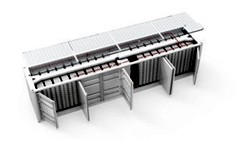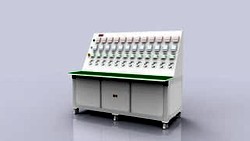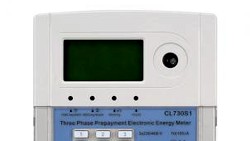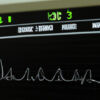In the field of electrical power systems, a key consideration beyond the more familiar concept of active power is reactive power. Reactive power plays an important role in the performance and stability of the grid, yet it often remains an enigmatic aspect for many. The purpose of this article is to shed light on what reactive power is, how it occurs, its implications for the network, and the measures that can be taken to address it.
What is Reactive Power?
In an alternating current (AC) circuit, reactive power (Q) is the power that flows back and forth between the source and load, but does not perform any useful work. It is caused by the interaction of inductance (L) and capacitance (C) in the circuit. Inductive loads, such as motors and transformers, store energy in their magnetic fields during the positive half-cycle of the voltage waveform. This energy is then returned to the source during the negative half-cycle. Capacitive loads, such as capacitors and fluorescent lights, store energy in their electric fields during the negative half-cycle of the voltage waveform. This energy is then returned to the source during the positive half-cycle. Reactive power is measured in volt-ampere reactive (var).
Or more simple, reactive power arises due to the interaction between inductive (L) and capacitive (C) components of the electrical system. Inductive components, such as motors and transformers, consume reactive power, while capacitive components, like capacitors, supply it.
Occurrence of Reactive Power
Reactive power (Q) emerges due to a phenomenon called power factor, which is the ratio between the active power (P) and the apparent power (S) in an AC circuit. The apparent power is the vector sum of active power and reactive power. The power factor is defined as the cosine of the phase angle (ϕ) between the voltage and the current waveforms.
When the power factor is less than 1, it implies the presence of reactive power. This situation occurs when the current waveform deviates from the voltage waveform due to the reactive elements present in the system. Inductive loads, prevalent in many industrial and commercial applications, tend to cause a lagging power factor, while capacitive loads can lead to a leading power factor.
What are the consequences when the grid lacks reactive power?
When reactive power is absent or insufficient in the grid, several issues can arise. Here are some consequences of the lack of reactive power:
- Voltage Instability
Reactive power is crucial for maintaining voltage levels within acceptable limits. Without adequate reactive power, voltage can become unstable, resulting in voltage sags, fluctuations, or even voltage collapse. This instability can disrupt the operation of sensitive equipment and lead to power quality issues. - Increased Power Losses
Reactive power helps to regulate and balance the flow of active power in the grid. In its absence, the transmission and distribution systems experience increased resistive losses, reducing overall system efficiency and wasting energy. - Reduced Grid Capacity
Reactive power plays a role in determining the available transmission capacity of power systems. Without sufficient reactive power support, the grid's capacity to transmit active power can be limited, resulting in congestion and reduced ability to meet growing power demands. - Equipment Overheating
Reactive power helps manage voltage levels and prevent excessive stress on electrical equipment. When reactive power is lacking, equipment can experience higher currents and overheating, leading to reduced equipment lifespan and potential failures. - Power Quality Issues
Insufficient reactive power can contribute to poor power quality, including increased harmonic distortions and lower power factor. This can affect the performance of sensitive equipment, disrupt industrial processes, and result in additional costs for power consumers.
What are the implications of excessive reactive power in the grid?
When there is an excessive amount of reactive power in the grid, several consequences can occur:
- Overvoltage Conditions
The grid will become over-excited. This means that the voltage in the grid will increase, which can cause problems for appliances and equipment that are not designed to operate at high voltages. It can also result in issues such as insulation breakdown and increased stress on power system components. - Grid Instability
An imbalance between reactive power supply and demand can disrupt the stability of the grid. Excessive reactive power can lead to voltage fluctuations, oscillations, and even voltage collapse, which can cause blackouts or widespread power outages. - Resonance and Harmonic Issues
Excessive reactive power can contribute to the occurrence of resonance phenomena, where certain frequencies resonate with the grid's natural frequencies. This can result in increased harmonics, power quality problems, and additional stress on equipment. - Wasted Energy and Inefficiency
Just as insufficient reactive power causes increased power losses, an excess of reactive power also leads to inefficiencies. The transmission and distribution systems may experience increased energy losses, reducing overall grid efficiency and wasting resources.
Measures to Address Reactive Power
The recommended power factor for distribution grids generally depends on various factors, including local regulations, industry standards, and specific grid requirements. However, a power factor of 0.95 or higher is commonly considered desirable and efficient for most power systems. To mitigate the negative impacts of reactive power and capitalize on its benefits, several measures can be implemented:
- Power Factor Correction
Installing power factor correction capacitors at locations with high inductive loads can offset reactive power requirements, improve power factor, and reduce losses. - Reactive Power Compensation
Employing reactive power compensation devices, such as static VAR compensators (SVCs) or synchronous condensers, can help regulate voltage and maintain a stable power system, but beware of overcompensation. Overcompensation occurs when excessive reactive power compensation devices, such as capacitor banks, are installed without proper assessment or control. This can lead to an overcorrection of power factor and cause voltage levels to rise beyond acceptable limits, potentially damaging equipment and compromising grid stability. Therefore, it is crucial to carefully design and regulate reactive power compensation to avoid overcompensation and maintain a balanced electrical system. - Advanced Grid Control Systems
Implementing advanced control and monitoring systems enables real-time reactive power management, allowing operators to optimize the grid's performance and response to changing conditions. The implementation of bidirectional electronic energy meters with four quadrant measurement has significantly simplified the monitoring and assessment of reactive power in the grid. These advanced meters enable the measurement of both active and reactive power in all four quadrants, allowing grid operators and consumers to easily gauge the reactive status of their electrical systems. By providing comprehensive data on power flow and reactive power consumption or generation, these meters facilitate better management and control of reactive power, aiding in optimizing power factor, improving efficiency, and ensuring the stable operation of the grid. - Energy-Efficient Equipment
Utilizing energy-efficient motors, transformers, and other electrical equipment reduces reactive power consumption and enhances overall system efficiency. - Awareness and Education
Educating consumers, industries, and grid operators about the significance of reactive power and promoting energy conservation practices can foster a more responsible and sustainable approach to power consumption.
Takeaway to Embrace a Balanced Grid
Reactive power is an integral aspect of AC power systems, and understanding its nature and implications is crucial for maintaining a reliable and efficient grid. By implementing the appropriate measures to address reactive power, we can strive towards a more balanced and sustainable electrical infrastructure, ensuring stable power supply and minimizing energy wastage.
For any inquiries regarding our monitoring solutions or four-quadrant meters, please do not hesitate to reach out to us. We are here to assist you with any questions you may have.
Editor's note: This article was originally published in July 2023 and has been updated for comprehensiveness.





All comments are moderated before being published. Inappropriate or off-topic comments may not be approved.